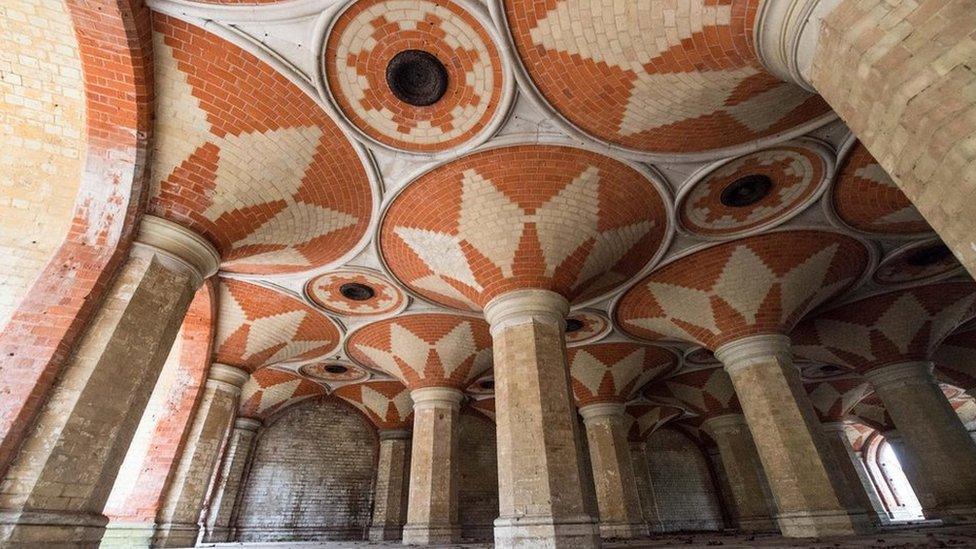Cabmen's shelters among London sites added to heritage list
- Published
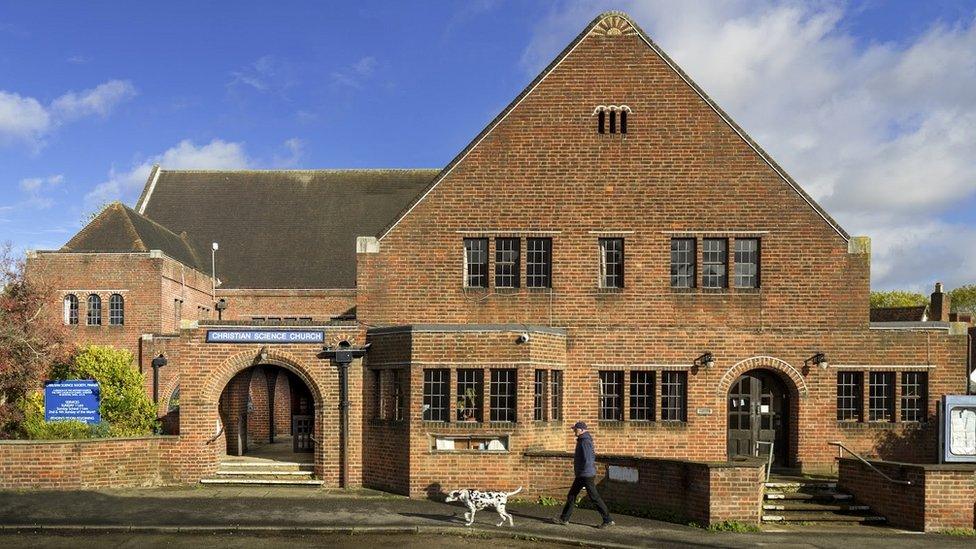
The Christian Science Church in Pinner is one of a number of sites now listed at Grade II
Two historic London cabmen's shelters and a 1980s army drill hall are some of the London sites added to this year's National Heritage List for England.
A total of 25 places in the capital have been put on the list, meaning they receive special protection.
Others include a post-World War Two church and 29 abstract decorative panels created by artist John Piper.
Historic England, which manages the list, says they have been protected so "everyone can continue to enjoy them".
A total of 240 historic sites across the country have been added to the National Heritage List this year.
The London sites that are newly listed, or have had their listing upgraded during 2022, have included:
Cabmen's shelters at Pont Street and Chelsea Embankment - each listed at Grade II
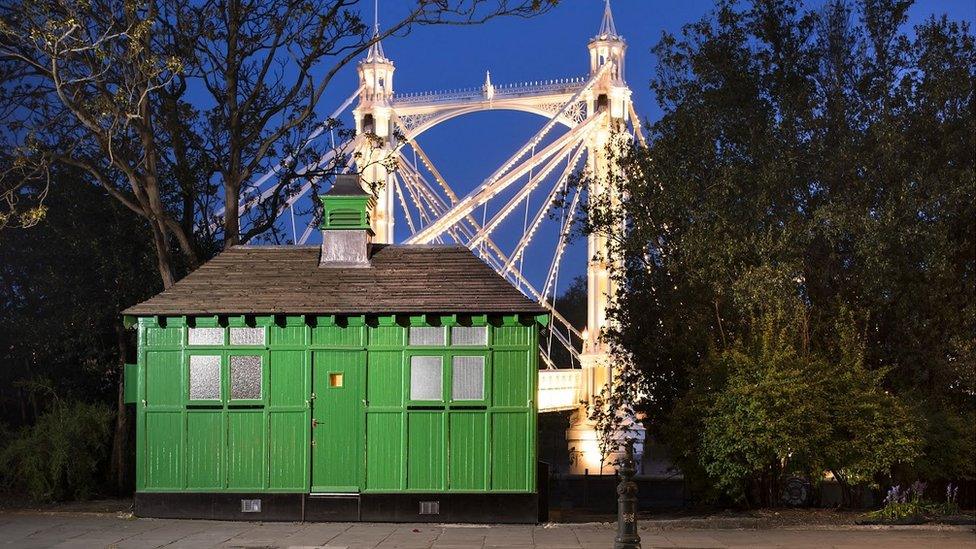
The Chelsea Embankment cabmen's shelter was originally built in 1912
Cab shelters began appearing in the capital during the 19th Century to provide Victorian cabbies a place to have a break and get some hot food 24 hours a day without having to leave their vehicles unattended - something which was illegal.
Out of 61 that are known to have been built between 1875 and 1950, only 13 remain today.
The shelter in Pont Street is still open having been built by the Cabmen's Shelter Fund in 1892 to replace an earlier version from 1875.
The one in Chelsea Embankment, sometimes referred to as The Pier due to its proximity to Cadogan Pier, was built in 1912 and was recently restored as a public micro cafe.
London Scottish House, Westminster - listed at Grade II
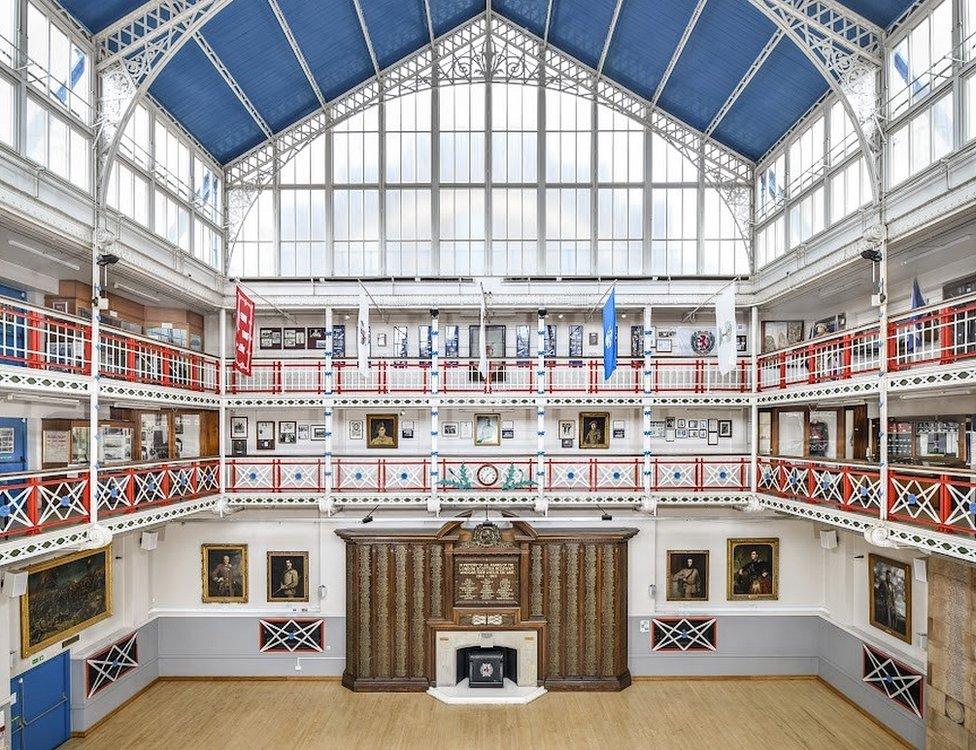
London Scottish House was built in the 1980s but incorporates elements from a previous Victorian building
London Scottish House was built on Horseferry Road as a drill hall for the London Scottish Regiment, an army unit founded in 1859 where enrolment was restricted to men with connections to Scotland.
The building, which still serves as the regiment's headquarters today, was constructed in the 1980s but incorporates elements from the previous Victorian building, which stood at 59 Buckingham Gate.
Elements featured within it include brightly coloured, wrought-iron double galleries running along all four sides of the hall, a high glass roof with decorative wrought-iron trusses and three very distinctive war memorials, commemorating the regiment's fallen.
John Piper panels on the Piper Building, Fulham - listed at Grade II
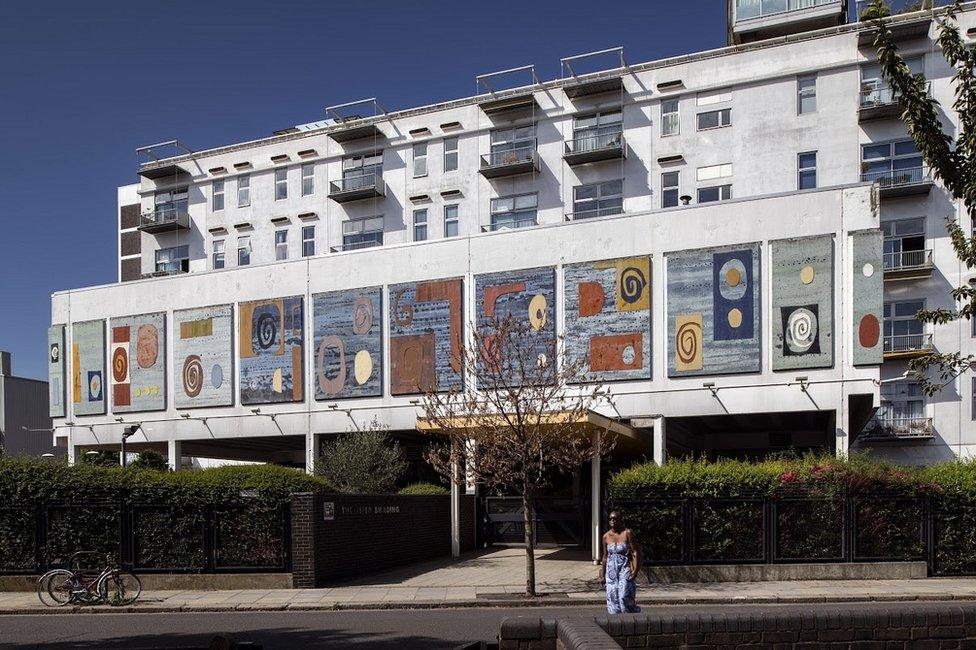
The fibreglass panels occupy a total area of approximately 250 sq metres
John Piper was a major figure in the British art world during the 20th Century.
Between 1961-62 he collaborated with Gillespie and Manzaroli Associates to produce a set of 29 abstract fibreglass panels to cover three sides of the exhibition block of Fulham's North Thames Gas Board headquarters, now known as the Piper building.
The inclusion of the colourful panels followed a wider trend at the time to create colourful public art to bring public spaces back to life as Britain recovered from World War Two.
Church of St Mary, South Ruislip - listed at Grade II
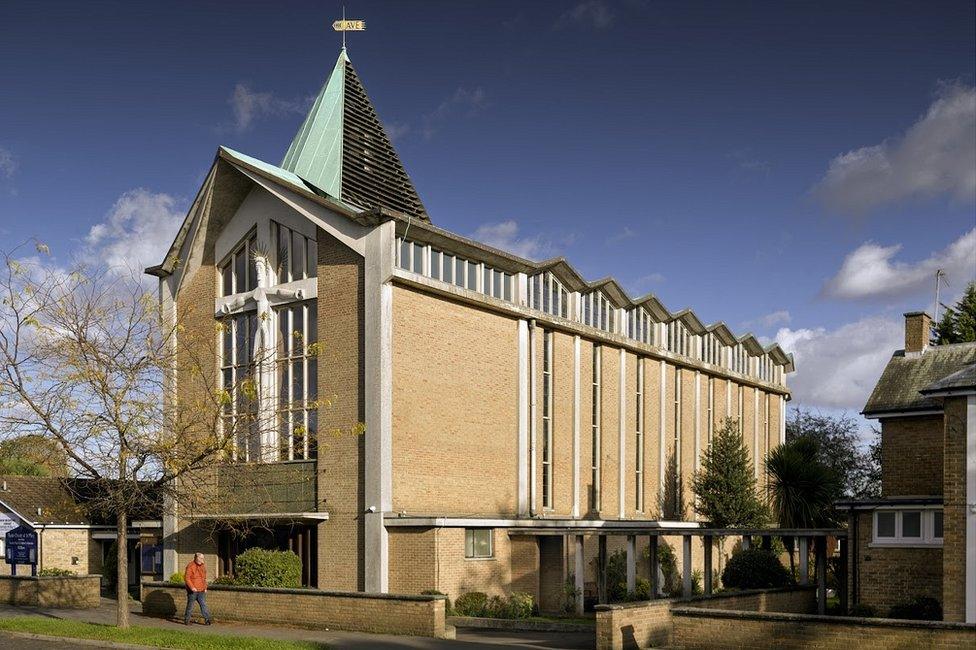
The church contains numerous original features from the 1950s
St Mary's was built in South Ruislip between 1957 and 1959 to the designs of Laurence Edward King and reflects the continuing influence at the time of the 1951 Festival of Britain.
It has a light and airy interior built from a reinforced-concrete frame, but due to the proximity of Northolt Aerodrome, a tower was not allowed to be included.
It also has a 24ft (6m) high Portland stone crucifixion sculpture, which was carved in situ by artist Brian Asquith.

Follow BBC London on Facebook, external, Twitter , externaland Instagram, external. Send your story ideas to hellobbclondon@bbc.co.uk
- Published10 November 2022
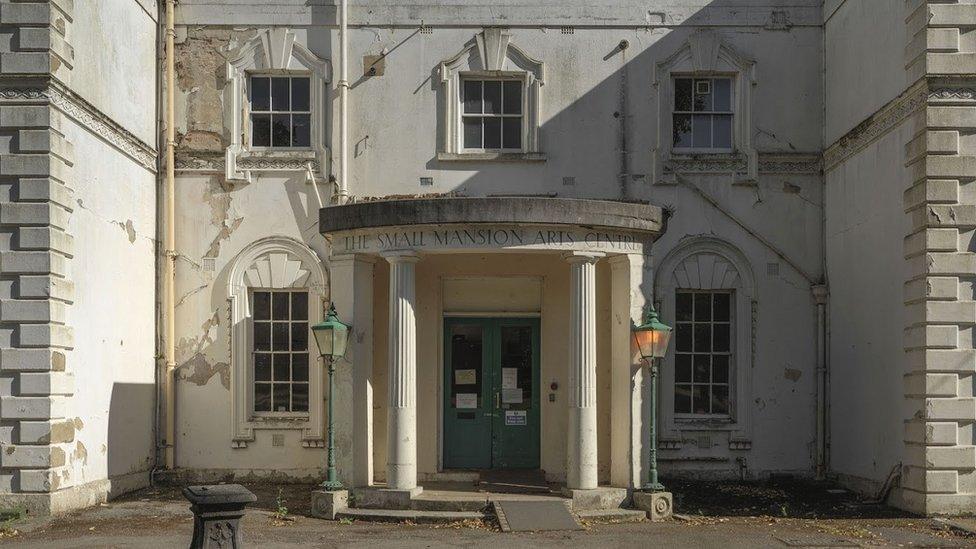
- Published20 October 2022
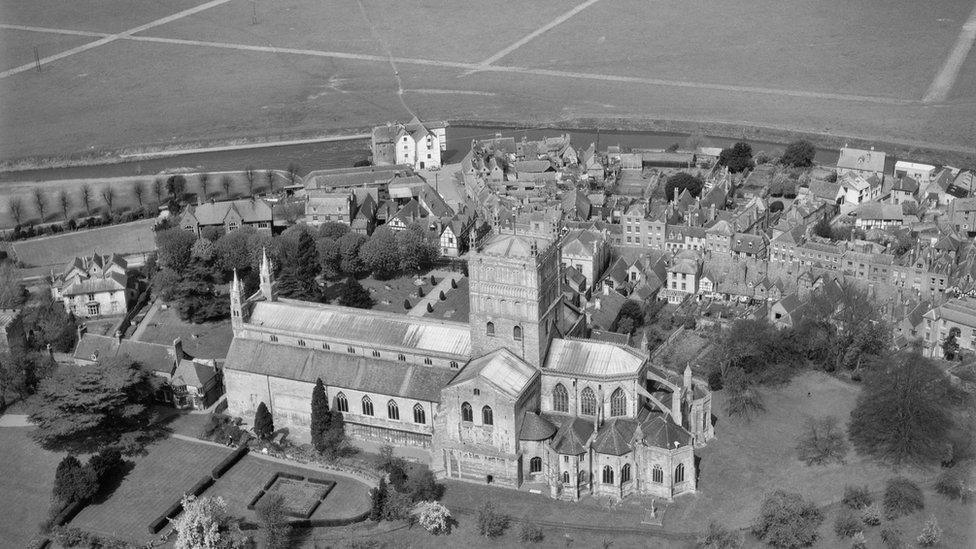
- Published5 July 2022
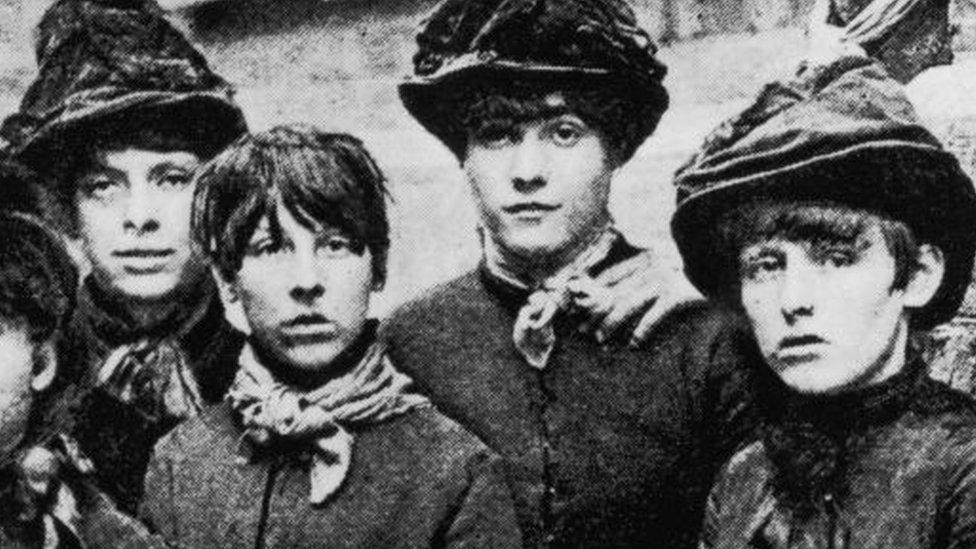
- Published29 June 2022

- Published12 January 2022
